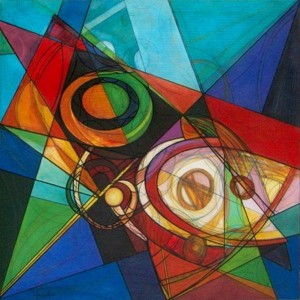By Lida Prypchan
 The genesis and content of a number of disciplines or activities outside the scope of medicine has repeatedly been psychoanalyzed. In this regard, the attention of psychoanalysts has addressed the history of religions, prehistory, mythology, and especially, literature and art. In this task, what psychoanalysts seek is to explain the psychological motivations lurking in the works of an artist.
The genesis and content of a number of disciplines or activities outside the scope of medicine has repeatedly been psychoanalyzed. In this regard, the attention of psychoanalysts has addressed the history of religions, prehistory, mythology, and especially, literature and art. In this task, what psychoanalysts seek is to explain the psychological motivations lurking in the works of an artist.
It is clear that artistic creation reflects the artist’s inner world and, often, his unconscious. From this point of view, nothing prevents their work from being analyzed using the same criteria that the therapist uses to decipher the dreams of a patient. In literature and contemporary visual arts, there are more or less avant-garde currents, such as Dada and Surrealism – which propose the incorporation of dream material into the artist’s work. Regarding other times, it is known that Freud was inspired by Greek tragedy in naming some of the complexes that he discovered (the Oedipus complex or the Electra complex), and this was because the Greek dramatists showed many of the major conflicts detected by contemporary psychoanalysis in the psychic life of patients. Authors such as Dostoyevsky, Stendhal and Flaubert set out an adjoining theme in their novels, almost always the neurosis or psychosis faced daily by the modern psychoanalyst in his clinic. Examples are: parricide, with all its oedipal and totemic burden in The Brothers Karamazov; the will to power, in Stendhal’s Red and Black; emotional and sexual frustration in the provincial Madame Bovary who ends up committing suicide.
Psychoanalysis of Artwork
The artist exhibits similar cases that the psychoanalyst attempts to resolve in their clinics and analyzes them carefully, although without a therapeutic purpose, using for this the prevailing literary or plastic techniques in each period of the history of culture.
Psychoanalysis of the Artist
This constitutes in itself an unusual case: Why would a man feel the imperative of artistic vocation, renounce what his peers call “a normal life” and dedicate himself to the task – difficult, problematic and financially unrewarding – of creating a work with words, shapes or sounds? Freud would say due to sublimation. That is to say, channeling the energy of his libido along courses different from the usual, and in this way, discharging the conflictive nature of its psychic contents. The artist is, in many cases, a neurotic who self-analyses himself and often obtains true healing through the spirit. Or who, at least, compensates and balances the shortcomings of his psyche, avoiding having them lead to the domains of pathology.
Freud and Art
Freud published five brief works dedicated to the psychoanalysis of art. They are: “Delirium and Dreams in Jensen’s Gradiva”; “A Childhood Memory of Leonardo da Vinci”; “The Moses of Michelangelo”; “A Childhood Memory of Goethe in Poetry and Truth”; and “Dostoyevsky and Parricide”.
Freud, at the beginning of “The Moses”, stated that he was ignorant in matters of art, although it attracted him greatly. What called his attention the most was that the most impressive artistic creations were beyond our understanding and, in this respect, he concluded that what impressed us could only be the intention of the artist.
Some philosophers before Freud – Plato among them – had already studied the role of the unconscious in artistic creation. It is often said that artists are dominated by a force beyond their will. It is known that many poets write almost in a trance, as if they were hypnotized.
Others turn to alcohol or drugs with the intention of releasing the more profound contents of the unconscious. Some scientists have come to consider the artist as crazy, classifying his works among the deliriums brought on by dementia.
According to Freud, the artist is a man who fails to completely satisfy his desires and who finds solace in creative invention. In another paragraph he writes: “Artists, like neurotics, flee a reality that is hardly satisfactory to them and take refuge in a fantasy world, but – unlike the mentally ill – are able to find their way back.”
Freud, however, recognized that sexuality is not the only source of art and that there are two different aspects of this, on which psychoanalysis does not shed any light: the skills of the artist and the technical means he uses for his work.
